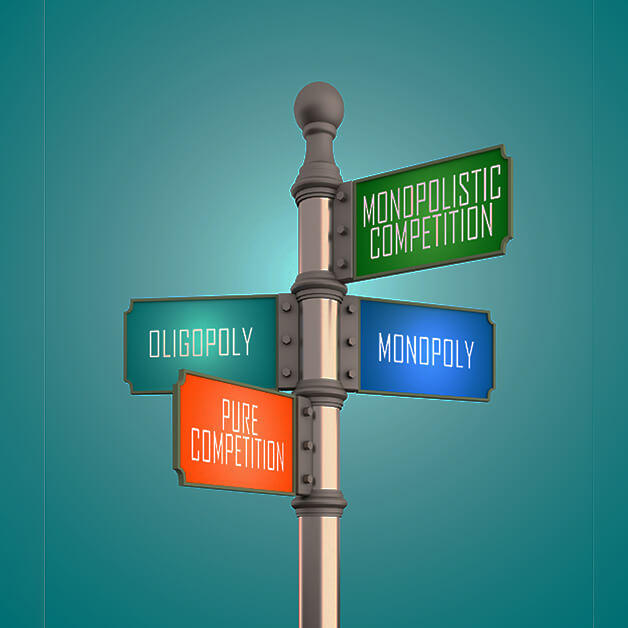May 17, 2022

Capitalism, Perversions, and Health Utilities
The collision of capitalism, healthcare, and a government payment system has produced perversions in the healthcare system that have been well-documented by me and other 4sight Health writers. Crazy incentives, government supported oligopolies, and labyrinthine regulations now populate the healthcare landscape. They are constantly vilified but rarely cured.
The response to this is the nonstop tinkering with the government-supported market by the Centers for Medicare and Medicaid Services. CMS has produced a blizzard of payment models in an attempt to un-warp the crazy incentives and increase competition, all in the context of a market economy. Very few models have succeeded.
A recent paper asks a different question: “What if it’s the ownership model, not the payment model?” In Disruptive Collaboration: A Thesis for Pro-Competitive Collaboration in Health Care, [1] the authors propose a very different way of increasing competition and tackling the healthcare oligopolies.
Drawing on the examples of Civica Rx and Navitus, the authors propose a “health utilities” approach to competing directly with the oligopolies. Civica Rx is a not-for-profit generic drug manufacturer built on the collaborative efforts of several well-known health systems and philanthropies. Its mission is to provide generic drugs at the lowest possible price. The “owners” are also the customers. Navitus is a health-system-formed prescription drug manager (PBM) that provides PBM services in a completely transparent way and passes on all discounts to its customers.
Uh-oh, isn’t this antithetical to capitalism? Well, no. An organizational decision to be for profit or not-for-profit is in itself a capitalist act — a decision about capital made freely in a market economy.
Also, let’s remember that these examples are a market response to oligopolies created and supported by a perversion-filled payment and regulatory system. In a market without considerable government interference, it’s likely that these oligopolies wouldn’t exist. And don’t get me wrong, I’m firmly a capitalist, and capitalism is going to respond to market distortions in a way that maximizes value for its owners and voilà — oligopolies, duopolies, and monopolies.
The problem with busting up oligopolies is that to do so government must change the rules, or a new entrant has to have the capital and scale to directly compete. Healthcare’s stranglehold on the political system is well-known and well-documented, so it’s very unlikely that the rules will change. Capitalists that don’t seek to maximize a pecuniary return and an organization that can achieve what the authors call “speed to scale,” may be what’s required to compete with government-made oligopolies.

We’ve Seen This Movie
Collaborating Americans have solved this problem before. There was a time, not so long ago, that rural America didn’t have electricity. The large government-regulated power utilities were reluctant to provide electricity to rural America because of the rather substantial capital expense of wiring a sparsely-populated area. The government stepped in, led by the Rural Electrification Administration, and provided loans and capital grants, not to the utility monopolies, but to rural electrical cooperatives.
The co-ops built the infrastructure, bought power, and supplied it to their customers at the lowest possible price. Many of the co-ops originally funded by the REA exist and flourish in rural America today. They no longer take government money and are regulated like other utilities. The customers are also the “owners.”
With the rural-electricity need, the government intervened to cure a classic “market-failure” monopoly problem. If you recall your Economics 101, because of the high capital costs, utilities were always held up as an example of a monopoly that should be tolerated in a market economy. (An arguable point.)
In the case of healthcare, the oligopolies don’t represent market failure. They are a market response and exactly what happens in a capitalist, regulated market with significant legislative and administrative capture.
Health Utilities and an Affordable Future
Building a “health utility” [2] does not require government capital. The Civitas Rx example shows what can happen when health systems and others collaborate and profit is not a motive. As other 4sight Health writers have demonstrated, not-for-profit health systems have healthy enough balance sheets to fund the “health utilities” with the capacity to meet the competitive and speed-to-scale problems.
Looking at the kidney dialysis market. Currently, two companies control the market with an effective market share of eighty percent. This duopoly is the logical outgrowth of kidney failure being a gateway into Medicare regardless of age, and Medicare being the largest payer for dialysis.[3] The authors of the Disruptive Collaboration study point to dialysis as the place to plant the next health utility. To do so will require billions in capital, indefatigable execution, and the ability to withstand some heavy headwinds from a captive legislature — but it just might work.
Capitalism has produced medical wonders. A look down the pipeline shows a tantalizing array of therapies and even cures for some of the cruelest of diseases. Most of these are ruinously expensive to individuals and to our health insurance and payment system. We all know we need to drive rents, waste, and unnecessary expense out of the system to create the means to afford the waiting wonders.
Fiddling with payment models will produce only so much. Health utilities may be useful in a limited number of circumstances but can be a highly disruptive force for competing against government-created oligopolies. And there’s massive waste and unnecessary spending caused by oligopolies that could be transformed into less expensive care, better outcomes, and a future we can afford.
Sources
1. New England Journal of Medicine Catalyst, March 29, 2022 https://catalyst.nejm.org/doi/full/10.1056/CAT.22.0057
2. On a personal note, I think the authors missed an opportunity by calling the model “health utilities.” Few people love their utilities, and for the most part, utilities are government-regulated monopolies. The model described in the paper much more closely resembles cooperatives, and “cooperatives” have a better brand.
3. End Stage Renal Disease confers eligibility to Medicare, regardless of age. If a beneficiary has private insurance, that insurance continues for 30 months before Medicare begins payment. Medicare is the largest payer, but not the only payer.
Read Other Articles From Kerry Weems
- February 2022: Death Math
- March 2021: Squared Up & Taking Shots: Our Stories from Vaccination Lines
- February 2021: What to Expect When You’re Expecting (A Budget)
- December 2020: Failing at Drug Price Reform
- November 2020: A Stalled Transition: Won’t Derail Biden’s Healthcare Team
- September 2020: A Pandemic Induced Collapse of the Way We Pay for Healthcare
- July 2020: Pandemic Preparedness: Beyond Bioterrorism & Federalism
- May 2020: Understanding Despair, Capture and Profiteering in American Healthcare
- February 2020: Advancing Advance Care Plans through Medicare: It’s Time to Move





